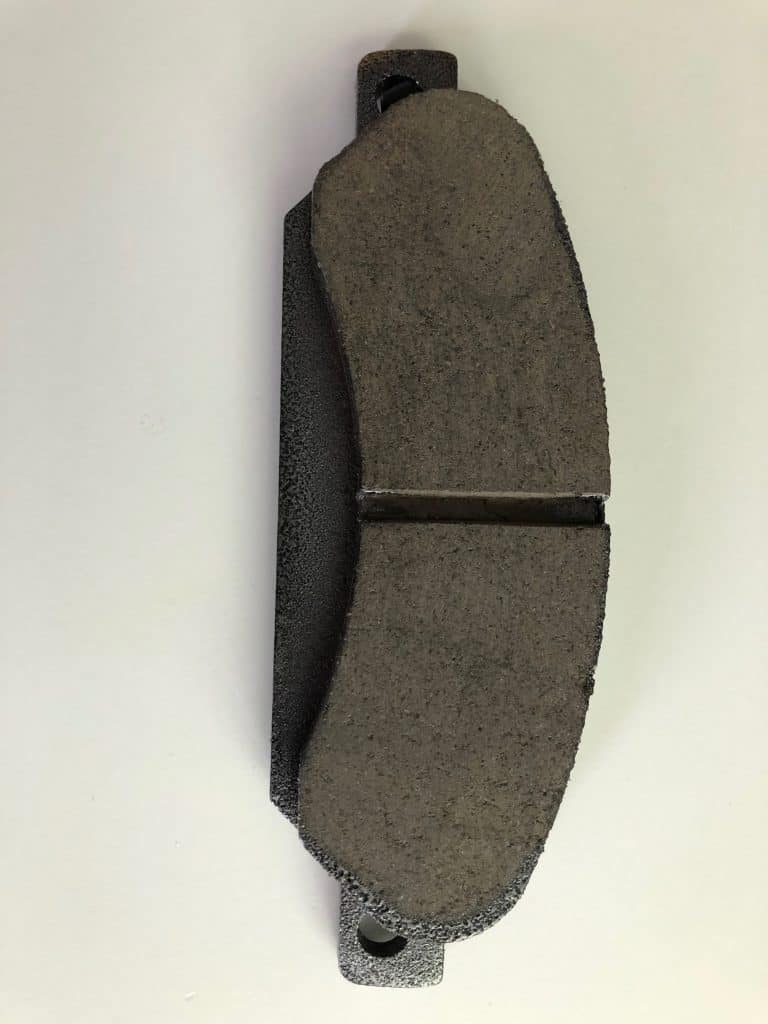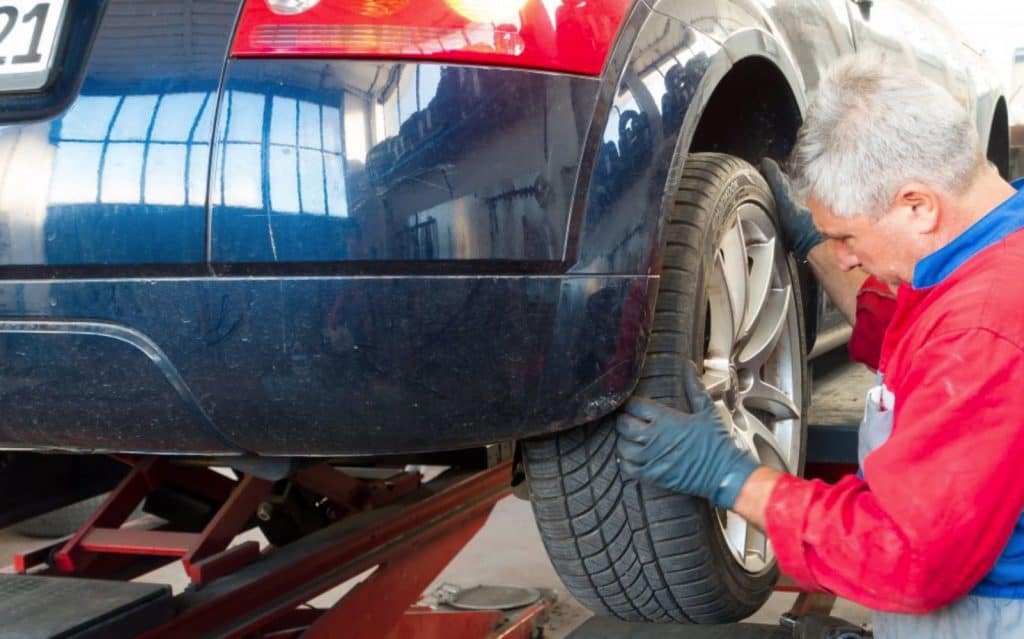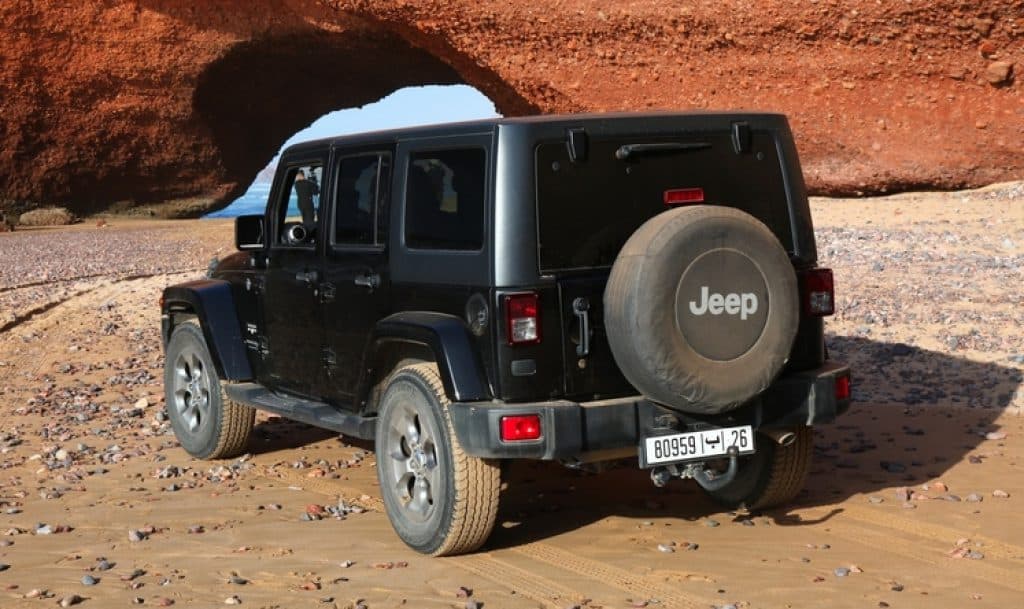Ever wondered how many brake pads are keeping your wheels in check? It’s a question that might seem simple, but it’s crucial for understanding your vehicle’s safety system.
Let’s lift the hood on this brake pad mystery and get you up to speed.

Most vehicles have two brake pads per wheel – one on each side of the rotor. This means a typical four-wheel car sports a total of eight brake pads.
But don’t get too comfortable with that number just yet. Some high-performance rides and heavy-duty trucks might pack more pads per wheel for extra stopping power and heat distribution, according to brake experts.
Now, before you start counting pads like sheep, remember that not all cars are created equal. Some cars use disc brakes on the front and drum brakes on the back. In this case, you’ll only find brake pads on the front wheels.
Fascinating, right? Stick around, and we’ll dive deeper into the world of brake pads.
See Also: Can you use brake fluid for power steering?
Key Takeaways
- Most vehicles have two brake pads per wheel, totaling eight for a four-wheel car
- Some cars use different brake systems for front and rear wheels
- Regular inspection and maintenance of brake pads is crucial for vehicle safety
The Anatomy of Braking Systems
Your car’s braking system is a marvel of engineering, working tirelessly to keep you safe on the road.
Let’s take a peek under the hood (or should we say, under the wheel?) to see what makes these mechanical marvels tick.
Disc Brakes and Drum Brakes
You might be surprised to learn that your car likely has two types of brakes. Disc brakes are the cool kids on the block, while drum brakes are the reliable old-timers.
Disc brakes are what you’ll find on most modern vehicles’ front wheels. They work like a bike brake, with brake pads squeezing a rotor to slow you down.
They’re great at dissipating heat, which is why they’re perfect for those panic stops when you realize you’ve left the oven on.
Drum brakes, often found on rear wheels, are like shy cousins who prefer to work in enclosed spaces. They use brake shoes that press against the inside of a drum.
While not as flashy as disc brakes, they’re excellent at holding your car in place when parked.
Components: An Inside Look
Now, let’s dive into the nitty-gritty of your brake system. It’s like a well-orchestrated dance, with each part playing a crucial role.
The star of the show is your brake pedal. When you step on it, it triggers a chain reaction. The brake fluid, the unsung hero, carries the force from your foot to the wheels.
In disc brakes, you’ve got the dynamic duo of brake pads and rotors. The pads clamp onto the rotor like a mechanical bear hug, creating friction to slow you down. The caliper acts like a strong-armed waiter, serving up the brake pads to the rotor.
For drum brakes, you’ve got brake shoes and wheel cylinders doing the heavy lifting. When activated, they press against the drum, creating enough friction to make even a teenager’s awkward dance moves seem smooth.
Understanding Brake Pads

Brake pads are the unsung heroes of your car’s stopping power. These little friction champions work tirelessly to keep you safe on the road.
Let’s dive into the nitty-gritty of these essential components.
Varieties and Materials
You might be surprised to learn that not all brake pads are created equal.
Ceramic brake pads are like the fancy cheese of the brake world – smooth, quiet, and a bit pricey. They’re perfect for your daily driver, especially if you value a quiet ride.
On the other hand, semi-metallic pads are the workhorses. They’re like that reliable old hammer in your toolbox – always ready for action. These pads are great for heavy-duty use and can take a beating.
Organic pads? They’re the eco-warriors of the brake pad family. Made from natural fibers and resins, they’re gentle on your rotors but might not last as long as their tougher cousins.
Role in Stopping Power
Ever wondered how your car stops on a dime? Thank your brake pads!
These friction-loving fellas are the key players in your vehicle’s stopping power. When you hit the brakes, the pads clamp down on the rotors like a bear hug, creating friction that slows your car down.
Front brake pads usually do most of the heavy lifting. They’re like the lead singer in a band – always in the spotlight.
Rear brake pads play more of a supporting role, like the bassist who keeps the rhythm going.
Your brake pad configuration can vary depending on your car. Some vehicles have disc brakes all around, while others mix it up with drums in the back. Either way, the principle remains the same – friction is your friend when it comes to stopping.
The Magic Number: Brake Pads Per Wheel

You might think brake pads are as mysterious as your teenager’s mood swings, but fear not! Let’s unravel the secret of how many brake pads your wheels are hiding.
Determining Brake Pad Count
Most vehicles are sporting two brake pads per wheel. That’s right, you’ve got a dynamic duo working hard to keep you from rolling through that stop sign. One pad hugs the rotor from the inside, while its partner clings to the outside.
But hold your horses! Some high-performance vehicles or heavy-duty trucks might have more. These overachievers can boast up to four pads per wheel. It’s like having a brake pad party, and everyone’s invited!
To figure out your ride’s pad count, just peek through the wheel spokes. Can’t see? No worries! Your trusty owner’s manual has all the juicy details.
Front vs. Rear Brake Pads
Now, you might be wondering if the front and rear wheels are playing by the same rules. Well, they often are, but there’s a twist!
Many cars use disc brakes up front and drum brakes in the back. If that’s your car’s style, you’ll only find brake pads on the front wheels. The rear wheels are living their best life with brake shoes instead.
But if you’re cruising in a sporty number or a newer model, you might have disc brakes all around. That means brake pads for everyone! Front and rear, they’re all invited to the stopping party.
Remember, your front brakes do most of the heavy lifting. They wear out faster than your rear ones, kind of like how your favorite jeans always get holes in the knees first.
When to Change Your Brake Pads

Knowing when to swap out those trusty brake pads is crucial for your safety and your wallet. Let’s dive into the telltale signs and how your driving style affects their lifespan.
Signs of Wear and Tear
Ever hear a high-pitched squeal when you hit the brakes? That’s your car’s way of saying, “Hey buddy, time for new shoes!”
Worn brake pads often produce this annoying sound, like a built-in alarm clock for your car’s maintenance.
Keep an eye on your dashboard, too. If that brake warning light starts glowing like a Christmas tree, don’t ignore it. It’s not just there for decoration!
Feeling a bit of vibration when you brake? That’s another red flag. Your brake pads might be wearing unevenly, or they’re so thin they’re practically nonexistent.
Here’s a pro tip: peek through your wheel spokes. If your brake pads look thinner than a slice of cheese, it’s time for new ones.
Most mechanics agree that when they’re down to about 3-4mm thick, you should start shopping.
The Impact of Driving Habits
You lead-footed speed demons out there, listen up! Your driving style can make or break your brake pads’ lifespan.
If you’re always zooming and stopping like you’re auditioning for “Fast and Furious,” expect to replace those pads more often.
City slickers, you’re not off the hook either. All that stop-and-go traffic is a brake pad’s worst nightmare.
Urban drivers might need new pads every 40,000 miles, while highway cruisers can stretch it further.
Heavy loads? Towing trailers? You’re asking a lot from those poor brake pads. They’ll wear faster than a pair of shoes at a dance marathon.
And for those of you living in hilly areas, gravity is not your friend. Constant downhill braking will eat through pads quicker than you can say “steep descent.”
Remember, gentle braking and looking ahead can save you cash in the long run. Your brake pads (and your wallet) will thank you!
Maintaining Top-Notch Braking
Keep your brakes in tip-top shape and your car will thank you. Not only will you stay safer on the road, but you’ll also save money in the long run.
Let’s dive into the nitty-gritty of brake care.
Regular Checks and Balance
You know that annoying squeal when you hit the brakes? That’s your car’s way of saying, “Hey buddy, check me out!” Don’t ignore it.
Regularly inspect your brake pads for wear and tear.
Got a penny? Use it to check your brake pad thickness. If Honest Abe’s head is fully visible when you place the coin in the pad groove, it’s time for new shoes, my friend.
Don’t forget about your brake discs. They’re like dance partners for your pads. If they’re warped or scored, your braking performance will suffer. Give them a once-over every time you rotate your tires.
Brake fluid is the unsung hero of your stopping power. Check it regularly and top it off if needed. If it looks darker than your morning coffee, it’s time for a flush.
Upgrading Brakes for Performance
So, you’ve got a need for speed? Well, you’ll need some serious stopping power to match.
High-performance cars often have multiple brake pads per wheel for better heat distribution and braking efficiency.
Consider upgrading to ceramic brake pads. They’re like the superhero version of regular pads – less dust, longer life, and better performance.
Your wheels will stay cleaner, and your wallet will be happier in the long run.
For the track day enthusiasts among you, slotted or drilled rotors might be worth a look. They help dissipate heat and improve braking in wet conditions.
Just remember, with great power comes great responsibility (and maintenance).
Don’t forget about your brake lines. Stainless steel braided lines can improve pedal feel and reduce brake fade during hard driving. It’s like giving your brakes a shot of espresso!
Frequently Asked Questions
Brake pad configurations can vary between vehicles. Understanding these differences helps ensure you purchase and install the correct pads for your ride.
Do vehicles typically use an equal number of brake pads on all wheels?
Most vehicles use two brake pads per wheel.
However, some high-performance or heavy-duty vehicles might have more.
Your front and rear wheels usually have the same number of pads, but there can be exceptions.
Is there a standard number of brake pads included when purchasing a set?
When you buy brake pads, you’ll typically get enough for one axle – that’s four pads total.
This covers both wheels on either the front or rear of your vehicle. It’s like buying shoes – you get a pair, not just one!
Are front and rear brake pads sold separately, or do I need to buy a full set for both?
Front and rear brake pads are often sold separately.
This is because front brakes usually wear faster than rear ones.
You might need to replace your front pads more frequently, so buying them separately can save you some cash.
When it comes to brake pads, does one size fit all, or do I need different quantities for different wheels?
One size definitely doesn’t fit all in the brake pad world.
Different vehicles can have different brake pad configurations.
While most cars use two pads per wheel, some may require more. Always check your vehicle’s specifications before making a purchase.
What should I expect when I buy brake pads – a pair for one wheel or a package for all wheels?
When you buy brake pads, you’re usually getting a set for one axle.
That means you’ll get four pads in total – enough for both wheels on either the front or rear of your vehicle. It’s like buying a four-pack of soda – you get enough to share!
Is the number of brake pads I need determined by the make and model of my vehicle?
Yes, the number of brake pads you need is indeed determined by your vehicle’s make and model.
Most cars use two pads per wheel, but some high-performance or heavy-duty vehicles might use more.
Always check your vehicle’s specifications or consult with a mechanic to be sure.
